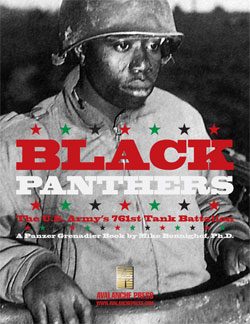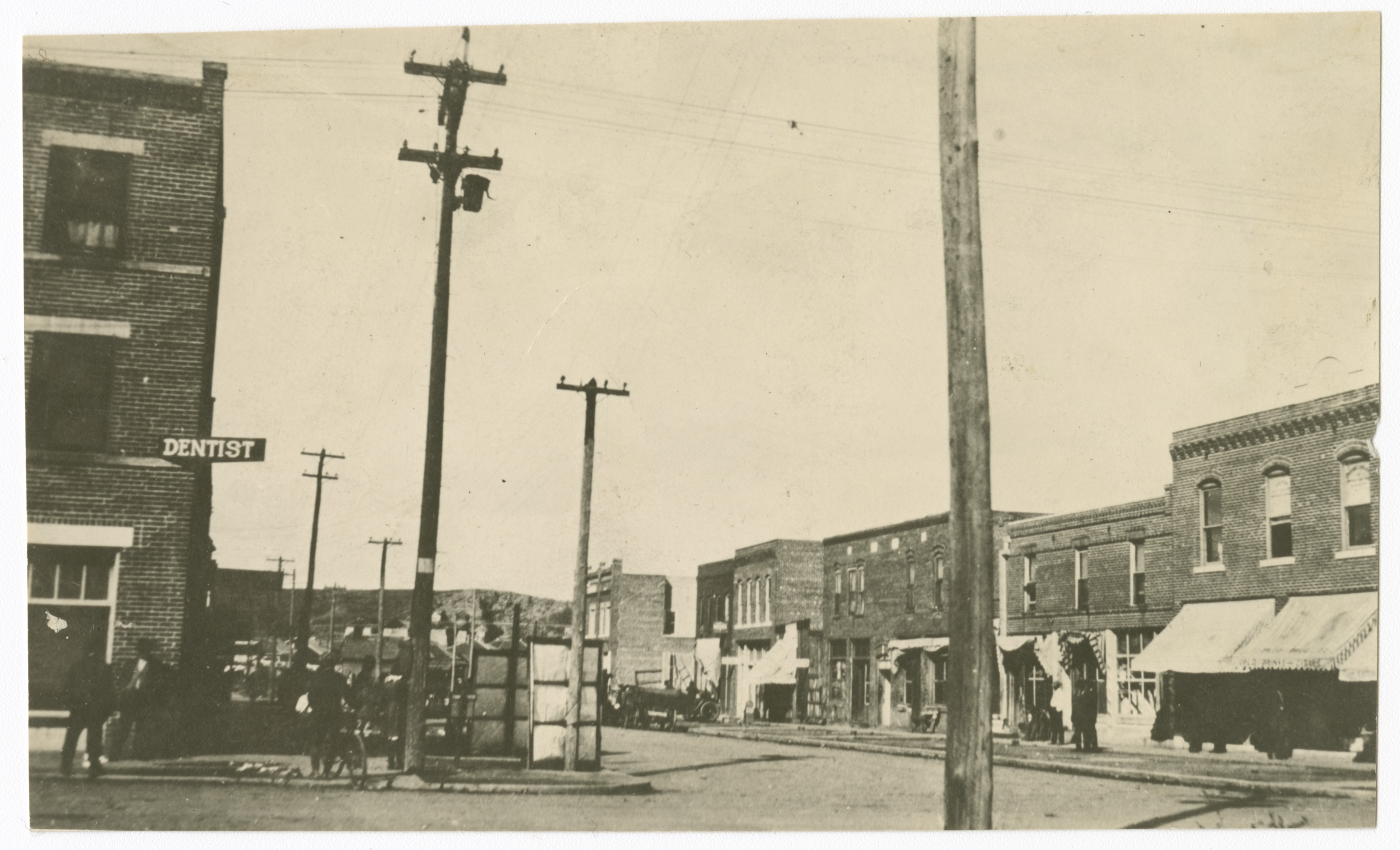| Race in America:
Tulsa
By Mike Bennighof, Ph.D.
June 2023
 I could see planes circling in mid-air. They grew in number and hummed, darted and dipped low. I could hear something like hail falling upon the top of my office building. Down East Archer, I saw the old Mid-Way hotel on fire, burning from its top, and then another and another and another building began to burn from their top. . . . The side-walks were literally covered with burning turpentine balls. I knew all too well where they came from, and I knew all too well why every burning building first caught from the top. I could see planes circling in mid-air. They grew in number and hummed, darted and dipped low. I could hear something like hail falling upon the top of my office building. Down East Archer, I saw the old Mid-Way hotel on fire, burning from its top, and then another and another and another building began to burn from their top. . . . The side-walks were literally covered with burning turpentine balls. I knew all too well where they came from, and I knew all too well why every burning building first caught from the top.
- Buck Colbert Johnson, Tulsa attorney.
The attacks by crowds of angry whites against Black businesses, homes and of course individuals reached their crescendo in 1921 in Tulsa, Oklahoma. In the immediate aftermath of 1919’s Red Summer, white fears eased slightly as the possibility of a Bolshevik uprising seemed less and Black veterans, like all discharged soldiers, were told to put away their uniforms. But the fear of interracial sex – specifically, Black men with white women – would be at the heart of America’s worst act of racial terror.
Tulsa, Oklahoma had only been founded in 1898, and three years later oil was discovered nearby on land held by the Osage Indian Nation, with much larger discoveries following in 1905. The oil boom led to very rapid growth as Tulsa went from a small town to the 97th-largest city in the United States, per the 1920 census, with a population of 72,000 (it would almost double by 1930, when Tulsa came in as America’s 58th-largest city).

Greenwood Avenue, the Black Wall Street, before.
Many of these new residents came from East Coast cities, including the Black residents of Greenwood. The U.S. Supreme Court had outlawed neighborhood segregation in 1917, but Tulsa like other Southern cities ignored the ruling and enforced its city ordinance anyway. By 1921 about 10,000 people lived in Greenwood, both immigrants from Northern states where segregation had never formally taken hold and the descendants of slaves held by Indian nations in Oklahoma.
Greenwood, initially called Little Africa, took a great deal of inspiration (and its name) from Booker T. Washington’s vision of Black capitalism. Greenwood became prosperous, with its main street, Greenwood Avenue, lined with attractive red-brick buildings housing hotels, banks, insurance companies and libraries. Owning and staffing those Black-owned business along the “Black Wall Street” was a thriving class of educated Black businesspeople and intellectuals. Here, as nowhere else in the United States, “separate but equal” actually existed. It would not exist for long.
Oklahoma had only become a state in 1907, but the newly-elected state legislature made passing a whole suite of Jim Crow laws its first order of business. Blacks were effectively banned from voting, serving on juries or holding public office. The same white resentments that fueled the Red Summer were stoked by burning envy of the uppity Blacks of Greenwood. On 30 May 1921 – Memorial Day – they exploded into unprecedented violence.

Greenwood Avenue, the Black Wall Street, after.
That morning, a 19-year-old Black shoe-shiner named Dick Rowland entered an elevator in the Drexel Building in Tulsa’s white downtown. Blacks were only allowed to use the restrooms on the top floor, and Rowland’s boss had made arrangements with the Drexel’s owners to give his Black employees access. The white elevator operator, a 17-year-old white girl named Sarah Page (who may have been as young as 15, and have come to Tulsa seeking a divorce), screamed shortly afterwards. Apparently, Rowland’s hand had touched her breast. Details are obscure: he may have tripped, and they may have known one another and been lovers. Whatever the circumstances, a clerk from a nearby clothing store rushed to the scene to rescue Page and Rowland fled.
Page told police she had not been assaulted and did not wish to press charges. Nevertheless, Rowland was arrested the next morning and moved to the Tulsa County Jail after a telephoned threat to his life. The Tulsa Tribune, one of the city’s two white-owned papers, ran sensational stories and editorials about the supposed near-rape and whipped a portion of the city’s white population into a frenzy of rage.
At the courthouse, Sheriff Bill McCullough sent employees home, disabled the elevator and fortified the top-floor jail as an angry white crowd surrounded the building. As they raged at McCullough’s refusal to allow them to murder Rowland, about 50 armed Black men from Greenwood showed up, telling McCullough they had come to help him as he’d requested. The sheriff denied making any such plea and urged them to return home. Seeing the armed Black men, whites went to fetch their own firearms and to try to seize them from National Guard armories.
More armed men, both Black and white, arrived at the courthouse and around 10 p.m. a shot was fired, possibly accidentally, and a firefight broke out that left 10 whites and two Blacks dead on the sidewalks around the courthouse. White mobs chased Black people out of white Tulsa, while the National Guard rounded up Blacks. While the sheriff and his deputies continued to defy the would-be lynch mob, the Tulsa police deputized hundreds of whites with instructions to “get a gun and get a n****r.”
On the next day, 1 June, firefights sparked all along the boundary between Greenwood and white Tulsa. Shortly after midnight the white attackers began tossing Molotov cocktails into buildings along the fringe of Greenwood and firing on the Tulsa Fire Department when it arrived to put out the blazes.
At sunrise on 2 June, thousands of whites staged a frontal assault on Greenwood behind five men in an automobile. All five were quickly shot and killed by the Black defenders, but this only served to further enrage the mobs. They overran the armed Blacks and began torching and looting buildings, shooting down any Black resident who fled. Survivors, including World War One veterans, reported that the mob had several machine guns taken from National Guard armories, and also attacked with up to a dozen aircraft that dropped flaming balls of turpentine.

Greenwood is burning.
Oklahoma National Guard Adjutant General Charles Barrett arrived later that morning, but stopped for breakfast before declaring martial law. Guard troops occupied Greenwood, exchanging fire with both Black and white men. By 4 June the fighting had ceased, martial law was lifted, and the Black Wall Street had been left a smoking ruin. One building, the Vernon AME Church, remained standing.
Sheriff McCullough spirited Rowland out of Tulsa, and all charges against him were later dropped. Estimates of the number killed range between 150 and 300; up to a thousand more were injured and thousands simply fled, never to return. At least 10,000 white people participated to some extent, but a grand jury investigation resulted in charges against one man. Tulsa Police Chief John Gustafson was convicted for failing to stop the riot and on an unrelated charge for corruption uncovered during the probe. Greenwood residents filed $1.8 million in claims against the city; the city denied all responsibility and paid just one claim, from a white gun store owner whose shop had been looted by the white mob in their search for weapons. Insurance companies likewise refused all claims.
Despite efforts of white Tulsa developers to turn Greenwood into an industrial area, residents slowly rebuilt a Black neighborhood on the site. A century later, a large part of Greenwood lies under a highway, Interstate 244, and the Tulsa campus of Oklahoma State University. Greenwood likewise disappeared from history texts in Oklahoma, despite many historical studies of the massacre in the century that followed. Efforts to repair the city’s image and memorialize the event began immediately. White Tulsa businessmen formed a commission on the day after the massacre, and named former Tulsa Mayor Loyal J. Martin to head it.
“Tulsa can only redeem herself from the country-wide shame and humiliation into which she is today plunged by complete restitution and rehabilitation of the destroyed black belt,” Martin said in an address to open the commission. “The rest of the United States must know that the real citizenship of Tulsa weeps at this unspeakable crime and will make good the damage, so far as it can be done, to the last penny.”
As of this writing (July 2021, updated June 2023), no restitution has ever been made to the residents of Greenwood.
The full series is here:
• Race in America: Founded on Slavery
• Race in America: Civil War
• Race in America: Jim Crow
• Race in America: The Black Doughboys, Part One
• Race in America: The Black Doughboys, Part Two
• Race in America: Red Summer
• Race in America: Tulsa
• Race in America: Klan Scam
• Race in America: Strange Fruit
You can order Black Panthers right here.
You will need Panzer Grenadier: Elsenborn Ridge to play Black Panthers.
Black Panther Package
Elsenborn Ridge
Black Panthers
Retail Price: $109.98
Package Price: $90
Gold Club Price: $72
You can experience the Black Panther Package right here.
Sign up for our newsletter right here. Your info will never be sold or transferred; we'll just use it to update you on new games and new offers.
Mike Bennighof is president of Avalanche Press and holds a doctorate in history from Emory University. A Fulbright Scholar and NASA Journalist in Space finalist, he has published a great many books, games and articles on historical subjects; people are saying that some of them are actually good.
He lives in Birmingham, Alabama with his wife, three children, and new puppy. He misses his lizard-hunting Iron Dog, Leopold.
Want to keep Daily Content free of third-party ads? You can send us some love (and cash) through this link right here.
|
